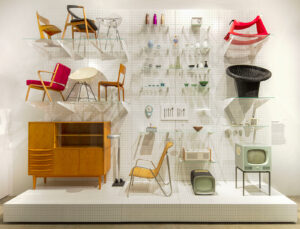
Plastic hens and Snow White’s coffin
More than 30 years after the fall of the Berlin Wall, the Vitra Design Museum is showcasing German design from 1949-89. Viewed through the prism of time, both the disuniting elements and the shared features become especially apparent.

Von der «Formgestaltung» zum «Design»


Parallel universes of consumerism in the 20th century

Abundance and scarcity

Designing a national identity

Designers from the GDR in a new light
German Design 1949 – 1989
Then at the Kunstgewerbemuseum / Staatliche Kunstsammlungen Dresden and at other locations.
The catalogue costs EUR 59.90 at the exhibition.



